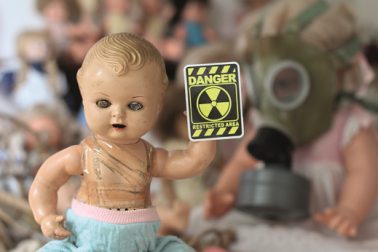Radon exposure in the workplace
 Radon exposure isn’t something that most people in the UK are aware of, which is perhaps surprising, as radon comprises the most significant component of background radiation that UK workers are exposed to. Here’s what you need to know about radon exposure in the workplace.
Radon exposure isn’t something that most people in the UK are aware of, which is perhaps surprising, as radon comprises the most significant component of background radiation that UK workers are exposed to. Here’s what you need to know about radon exposure in the workplace.
What is radon?
Radon is a naturally occurring radioactive gas. It’s formed by the decay of small amounts of uranium (which also occurs naturally in rocks and soils). Radon is colourless and odourless, so is hard to detect.
Why is it a problem?
The Health and Safety Executive (HSE) says that radon is now recognised to be the second largest cause of lung cancer in the UK after smoking. Small amounts of radon are not necessarily harmful. It is usually breathed in and immediately exhaled, with no lasting effect. However, radon itself also breaks down to produce tiny radioactive particles in the air. High levels, over time, can damage lung tissue and increase the risk of lung cancer.
Legislation
The Management of Health and Safety at Work Regulations 1999 not only state that employers have a legal duty to ensure that their working environment is safe. Levels that require measures to ensure employee safety are covered in the Ionising Radiation Regulations 2017.
Which workplaces can be affected by radon?
Any indoor workplace, such as a factory, office or shop, may be affected by radon. Underground work sites such as mines, cellars and underground service ducts may have an increased risk. Some parts of the UK are at higher risk than others due to higher natural levels of radon in the ground. Any workplace can, however, be at risk, and a radon exposure assessment can help put your mind at rest, or enable you to put suitable protective measures in place if necessary.
Monitoring and action levels
As mentioned, radon is not easy to detect under normal circumstances, but it can be detected, and measured, with specialist radon monitoring devices. The number of devices needed will depend on the size and layout of the area to be assessed, so it is important to devise a monitoring plan that is suitable for your business premises and work sites. To allow for seasonal variations and get an accurate average annual level of radon, you will need to monitor over a 12-month period.
The Ionising Radiation Regulations require employers to take action to limit radon exposure in any workplace where average annual results exceed 300 Bq/m3. In workplaces where radon levels are below this, no action is required, but it’s advisable to keep records of your assessment, and carry out another one in around 10 years, or sooner if there are significant changes to the structure of your premises that could cause radon levels to rise.
Protective measures
There are various measures that can be taken to protect employees from radon exposure in the workplace. These can include ventilation of various areas within the workplace, such as underfloor ventilation where appropriate, as well as sealing gaps in floors, and walls that are in contact with the ground. It may also be necessary to install extraction pipework or radon sumps.
After putting protective measures in place, you will need to reassess the radon levels to check their effectiveness. This should be an ongoing procedure, with radon levels being remeasured annually, alongside maintenance of your new control methods.
According to a 2010 Health and Safety Executive report, around 48% of the average UK radiation dose came from radon, so it’s well worth protecting your workplace and employees.
